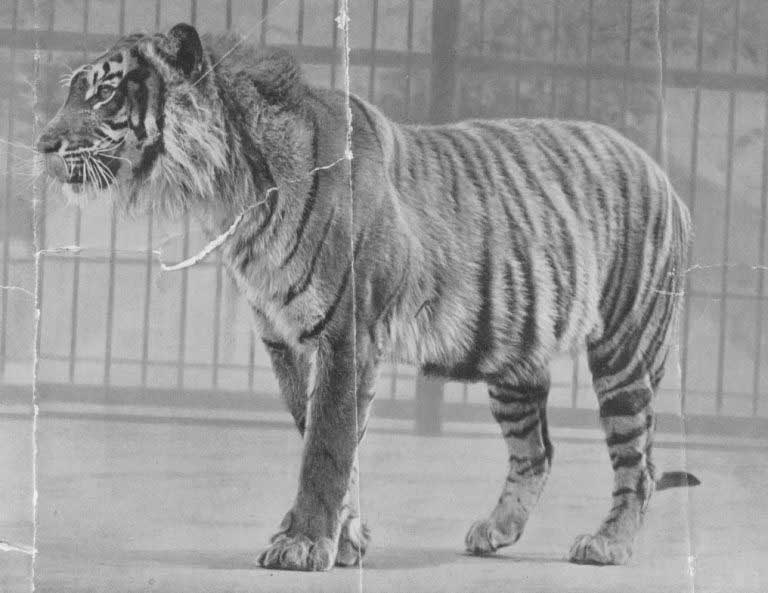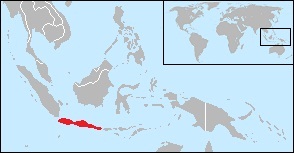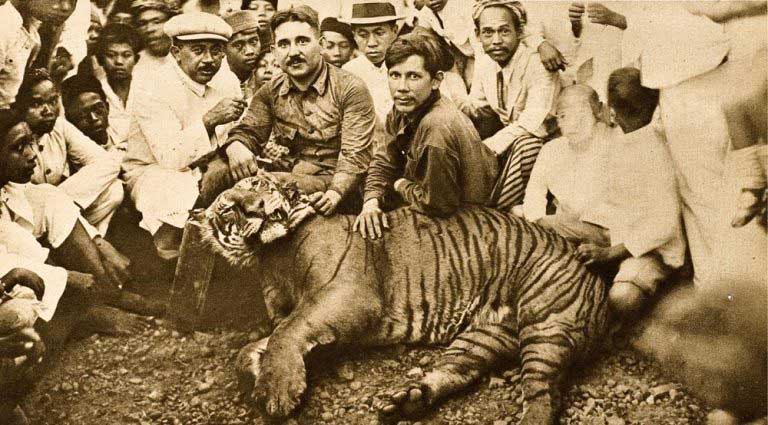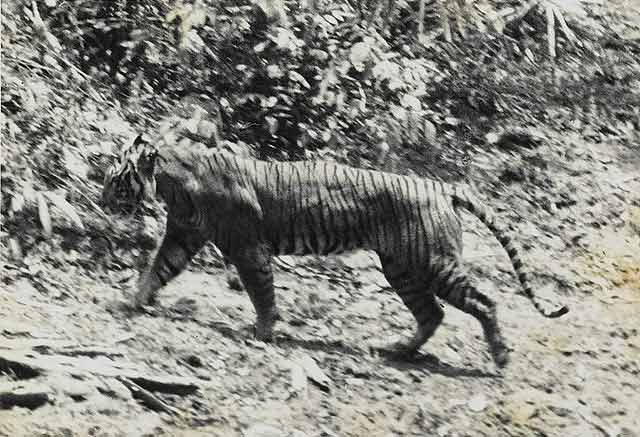Once a majestic inhabitant of the Indonesian island of Java, the Javan Tiger is a poignant reminder of the delicate balance between nature and human intervention.
With its unique characteristics and historical significance, this magnificent creature has sadly vanished from our world, leaving behind tales of its grandeur and the lessons of its loss.
Quick Overview
| Attribute | Details |
|---|---|
| Habitat | Dense tropical forests, lowland river valleys, and grassy areas |
| Weight | Male: 100-140 kg (220-309 lbs) Female: 75-115 kg (165-253 lbs) |
| Length | Male: 7.9 feet (2.4 meters) Female: 6.6 feet (2 meters) |
| Diet | Primarily deer, wild boar, and other smaller mammals |
| Conservation Status | Extinct (last confirmed sighting in the 1976) |
| Population | – |
| Primary Threats | Habitat loss due to agricultural expansion, hunting, and lack of prey |
Taxonomy
The Javan Tiger was scientifically named Panthera tigris sondaica. Its classification journey began in 1912 when the German zoologist Ernst Schwarz described it based on skin and skull from Bali. However, its distinctiveness was debated over the years.
By the 21st century, genetic studies and taxonomic revisions led to recognition of the Javan tiger population and the Bali and Sumatran tiger populations as P. t. sondaica.
Despite these classifications, the debate over its exact taxonomy continued, with some studies in 2018 supporting the traditional concept of six living subspecies.
| Kingdom | Animalia |
|---|---|
| Phylum | Chordata |
| Subphylum | Vertebrata |
| Class | Mammalia |
| Order | Carnivora |
| Suborder | Feliformia |
| Family | Felidae |
| Genus | Panthera |
| Species | Panthera tigris |
| Sub Species | Panthera tigris sondaica |
Characteristics

The Javan tiger was a medium-sized tiger, distinct in its appearance. Males, generally larger, weighed between 220-308 lbs (100-140 kg) and measured about 7.9 feet (2.4 meters) in length. Females, on the other hand, weighed between 165-243 lbs (75-110 kg) and spanned a length of approximately 6.6 feet (2 meters).
Their fur, characterized by dark hues interspersed with closely spaced stripes, provided them with natural camouflage amidst Java’s dense forests.
Distribution and Habitat

Historically abundant, the Javan Tiger’s habitat spanned the lush landscapes of Java. Fossil evidence suggests that around 12,000 years ago, they also roamed Borneo Island and Palawan in the Philippines.
By the 1940s, human activities pushed these tigers into remote forest ranges, and post the Second World War, their natural habitats faced fragmentation due to plantations, leading to a significant decline in their numbers.
Behavior and Ecology
The Javan Tiger primarily preyed on wild boar, rusa deer, and banteng. Occasionally, they also consumed waterfowls and reptiles.
Their hunting prowess was a testament to their adaptability and survival instincts, navigating the challenges of their diminishing habitats.
Conservation
Despite the dwindling numbers, efforts were made to conserve the Javan Tiger. Protected areas like Ujung Kulon, Leuwen Sancang, and Baluran were established between the 1920s and 1930s. However, post the civil unrest in 1965, no confirmed tiger sightings were reported in these areas.
By the 1970s, the last known Javan Tigers were believed to reside in the Mount Betiri region. Despite conservation efforts in the 1980s, it was too late by the time the Meru Betiri National Park was established.
In the 1990s, after exhaustive surveys and search efforts, the Javan Tiger was officially declared extinct.
Extinction

The decline of the Javan Tiger began in the early 20th century. By the 1940s, they were confined to remote forest ranges. The post-World War II era saw their habitats shrink due to plantations.
By the mid-50s, only 20-25 tigers were believed to remain. The 1970s saw a further decline, with the last known tigers residing in the Mount Betiri region.
Despite conservation efforts, by the 1990s, after exhaustive surveys, the Javan Tiger was officially declared extinct.
The last confirmed sighting was in the late 1970s, and by the time conservation measures were implemented, it was tragically too late.
Conclusion
The tale of the Javan Tiger serves as a stark reminder of the consequences of human actions on biodiversity. Their extinction underscores the importance of timely conservation efforts and the need to maintain a harmonious balance with nature.
As we remember the Javan Tiger, let it symbolize the lessons learned and the urgent call to protect the remaining wonders of our natural world.
FAQs
The Javan Tiger was a subspecies of tiger that once roamed the Indonesian island of Java. It’s now extinct.
The Javan Tiger was officially declared extinct in the 1990s, with the last confirmed sighting in the late 1970s.
The primary reasons include habitat loss due to human activities, fragmentation of their natural habitats because of plantations, and hunting.
The Javan Tiger was slightly smaller than other mainland Asian tiger subspecies and had thin, long stripes and a unique skull structure.
Yes, protected areas were established between the 1920s and 1930s, and conservation efforts were made in the 1980s. However, by the time significant measures were implemented, it was too late.
While the Javan Tiger is extinct, other tiger subspecies like the Sumatran Tiger still exist, though many are endangered.




